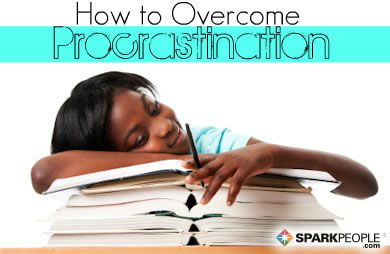|
Whether you've heard tales of the "runner's high" or hear Elle Woods' infamous quote about the ties between exercise, endorphins and happiness echoing in your head at the gym, it's no secret that regular exercise has a reputation for making people feel good. In the professional health and wellness community, there has been increasing interest in the ways in which working out can promote wellbeing and self-esteem among both clients and research studies. For anyone struggling with self-esteem or body image issues, though, such ideas seem far-fetched at best and fictional at worst. Exercise is hard, after all, so why would struggling help anyone feel better about themselves? While it may be difficult to believe if you struggle with weight issues, are disabled or have tried exercise in the past and failed, there is a link between physical strength and mental strength. With improved self-esteem comes a feeling of being worthy of happiness and a better quality of life, despite physical impairments or limitations. Those who suffer disabilities, handicaps, paralysis, poor or non-functioning limbs, at times feel unwelcome, awkward, and isolated. The same is true for others who may be impaired by obesity, physical weakness that accompanies aging or other limitations. Such situations often lead to loneliness, depression, and other mental health issues. Those facing these challenges need encouragement and better self-esteem to overcome obstacles. Endorphins Make You Happy—Right?Exercise releases "feel-good" chemicals—dopamine and endorphins—in the brain. The endorphins produced by movement and exercise boost mood, help you to feel better physically and mentally, develop a positive attitude and provide emotional stamina needed to set and take on personal goals. Movement, to whatever degree feasible, stimulates positive feelings. With continued exercise and movement, positive feelings grow stronger, often resulting in a formerly lonely and isolated person finding interest in exploring new places and meeting new people. Exercise also helps regulate cortisol and adrenaline, two hormones that the body produces when under stress. As such, regular physical activity can be a continuous reliever of stress and anxiety. With less stress, a physically challenged person can feel stronger, freer, calmer, and have more ability to concentrate on tasks. While it might sound challenging and feel uncomfortable or even unnatural at first, know that our bodies crave movement. Once you get beyond the first few humps, you'll start to feel increased energy levels, a more positive outlook and so many more mental benefits you never thought possible. Give it time and be gentle with yourself as you get started, and soon you'll start to understand what all the hype is about. What Could You Achieve With Movement?Perhaps the best proof of concept is the transformation from debility and lack of self-confidence to better function and self-esteem I saw when working with a gentleman afflicted with Parkinson's disease. Beyond the physical issues, some individuals experience loss of confidence, a change in their overall sense of wellbeing, and other emotional and psychological conditions including depression and anxiety. My goal with this gentleman was to help him live a better life by feeling and functioning better. My rule always is to first treat the person, then treat the problem. After a complete assessment and evaluation of this client's physical challenges and thorough consideration of the emotional and psychological factors connected with his situation, I determined his issue was less about tremors and more about the stiffness of limbs and joints. I also noticed a shuffling in his gait and overall low energy. He lacked that "spring in his step." At the onset, we focused on balance and coordination to target a neurological connection. In this way, the client learned to recognize and sense how movement "feels," which is key in achieving the mind-body connection. After strengthening his mind-body awareness, we worked on combatting the rigidity of his muscles and joints with simple balance and coordination exercises on various pieces of equipment. In time, his mind learned to focus on mastering each move, gradually building confidence along the way. As we continued to work together, the client gained the ability to add layers of skill and movement, achieving greater core strength, ease of movement and confidence. He progressed in his physical and mental ability, and was able to learn to stabilize and control his movements and thoughts. While everyone's story and progress will vary due to personal and outside factors, physical activity is integral to achieving one's potential no matter the stage of life or the physical or emotional challenges. The work with my Parkinson's client gave me the gratification of seeing his improved control, balance, coordination, ease and function, as well as the smile on his face, improved color in his skin and that long-lost "spring in his step." To a person who suffers some hampered physical condition—be it obesity or physical disability—engaging in some level of exercise and movement brings some degree of gratification. One's attitude improves with the demonstration of what is possible with some physical effort. With improved self-esteem and confidence, even a body with limitations is capable of achieving a feeling of accomplishment and improved wellness. Never forget that everyone deserves an opportunity to feel better, function better and live better.  About the Author Jessica Schatz, The Core Expert, uses her extensive knowledge, skill and heart to inspire others to live better, happier lives. She is acknowledged in the health, wellness and fitness communities for her integrative methodology and teaching of the mind-body connection. Jessica's diverse clientele includes professional athletes, dancers, actors, as well as anyone who desires transformation into optimal wellness. About the Author Jessica Schatz, The Core Expert, uses her extensive knowledge, skill and heart to inspire others to live better, happier lives. She is acknowledged in the health, wellness and fitness communities for her integrative methodology and teaching of the mind-body connection. Jessica's diverse clientele includes professional athletes, dancers, actors, as well as anyone who desires transformation into optimal wellness. |
Popular Entries
Related Entries
More From SparkPeople
|





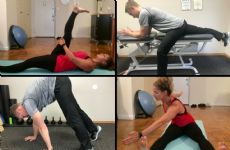
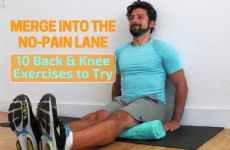

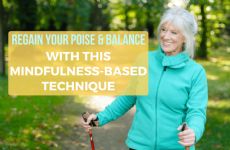

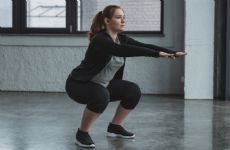






.jpg)
